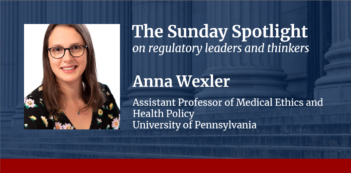
State policies create and exacerbate barriers to access rural health care.
In Georgia, women living in rural areas have as much as a 50 percent higher maternal mortality rate than women living in urban areas. Most rural women do not live within a 30-minute drive of a hospital that offers obstetric services.
Lack of access to obstetrical care contributes to a significant maternal health crisis in rural America. In a policy brief, physician Darcy Nikol Bryan argues that state-level policies exacerbate—and may even create—barriers to maternal health care in rural communities.
Although the U.S. Department of Health and Human Services awarded $9 million in 2019 to improve care in rural communities, Bryan claims the rural maternity care crisis cannot be solved by a grant alone. She argues that state-level regulations such as “certificate-of-need laws, scope-of-practice restrictions, state medical licensing requirements, and limits to telemedicine implementation” hinder efforts to improve maternal health outcomes in rural communities.
Despite innovation in the rural health care sector and efforts to implement health care reforms, state public policies hinder progress to improve maternal health outcomes, claims Bryan.
For example, certificate-of-need laws which require state departments of health to determine a need for additional health care resources, such as MRI scanners or new hospitals, before such facilities can be licensed, have prevented urgent care and ambulatory surgical centers from entering or expanding the same markets as rural hospitals. State officials claim that these urgent care and ambulatory surgical centers take profits away from struggling rural hospitals. But the result leaves patients with fewer hospitals to choose from, Bryan argues.
Similarly, Bryan claims that scope of practice restrictions limit access to health care by preventing professionals such as “physician assistants, certified nurse-midwives, and nurse practitioners,” from performing certain tasks.
Nurse practitioners and physician assistants can provide high quality health care with the same efficacy as primary care physicians, according to Bryan. By restricting the ability of nurse practitioners and physician assistants to operate independently, scope of practice restrictions limit the availability of health care in rural areas.
Bryan contends that rural women are hurt the most when states restrict the scope of practice of nurse practitioners because low-risk pregnancies do not require a medical doctor for their management.
Bryan argues that state-level medical licensing also restricts the supply of health care labor by imposing standards on a state-by-state basis rather than according to a national standard. States charge physicians for a medical license to practice, which can range from $100 to $800 every two years.
State licensing requirements prevent the health care sector from recruiting temporary or part-time employees, argues Bryan. Twenty-three states recognize the limitations of state-level licensure requirements and have joined an interstate licensure compact to encourage physicians to practice in more states.
Streamlining licensing requirements to facilitate physician mobility would facilitate the growth of telemedicine. Physicians may not want to move to a rural area, but if a physician has a license to practice, they can practice remotely.
Telehealth faces other state restrictions that prevent its use in rural communities. Some states require that a patient see a physician in person before allowing the physician to see the patient remotely or mandate that a nurse be present with the patient while the physician conducts the telehealth appointment.
Some state Medicaid programs do not cover telehealth or do not reimburse for telehealth appointments at parity with in-person appointments. Other states do not allow online prescribing by a telehealth provider.
Bryan acknowledges that the regulation of telehealth stems from concerns that telemedicine would not be safe or effective, but cites studies that show the efficacy, safety, and security of telemedicine.
Before taking steps forward to improve technology and stop rural hospitals from failing, state policymakers must evaluate how state policies encourage barriers to health care and worsen maternal health outcomes in rural communities, Bryan argues.
Since traditional efforts to improve health care access by expanding insurance coverage have failed to improve maternal mortality in rural communities, Bryan urges state policymakers to evaluate and overturn policies that she claims are proven to worsen rural health conditions.



